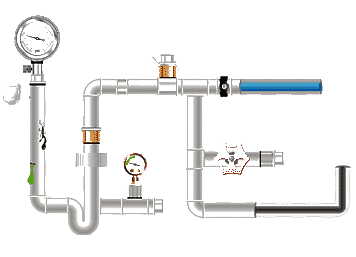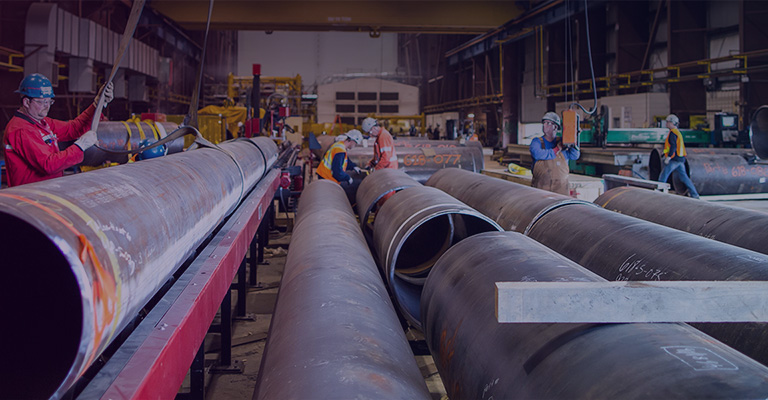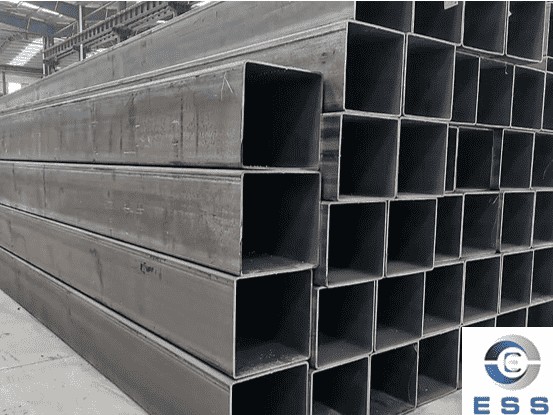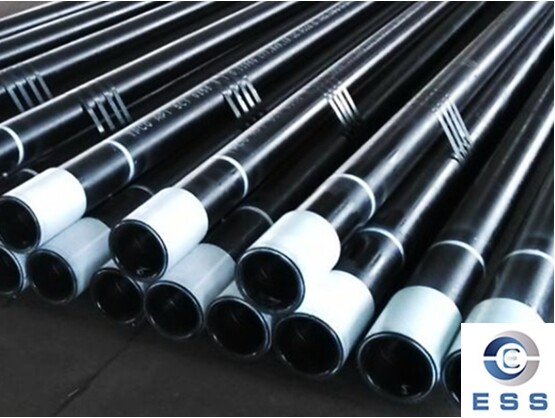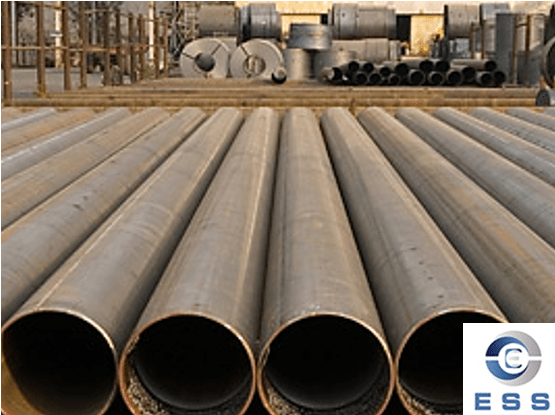Hot rolling is relative to cold
rolling, cold rolling is rolling below the recrystallization temperature,
and hot rolling is rolling above the recrystallization temperature.
Hot-rolled seamless
steel tubes are made from carbon or alloy steel through
high-temperature rolling and perforation. They typically have an outer diameter
of 32mm or greater and a wall thickness ranging from 2.5mm to 75mm. The
production process includes ingot perforation, hot rolling, and quality
inspection. This process refines the grain size and improves mechanical
properties, making it suitable for applications in construction, machining,
petrochemicals, and fluid transportation.
Hot-rolled seamless steel tubes are
divided into general steel tubes, low- and medium-pressure boiler
steel tubes, high-pressure boiler steel tubes, alloy steel tubes, stainless
steel tubes, petroleum cracking tubes, geological steel tubes and other
steel tubes.
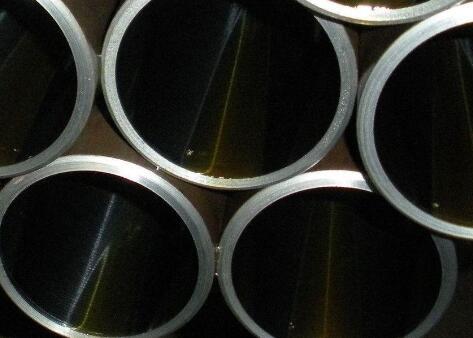
Hot-Rolled Seamless Steel Tube
Production Process
Hot-rolled seamless steel tubes: Round
billet → Heating → Perforation → Three-roller cross-rolling, continuous rolling, or extrusion → Tube stripping → Sizing (or reducing) → Cooling → Billet tube → Straightening → Hydrostatic testing (or
flaw detection) → Marking → Storage.
Materials of Hot-Rolled Seamless Steel
Tubes
Hot-rolled seamless steel tubes are
typically made of carbon steel, alloy steel, and stainless steel.
Carbon steel grades include 20#, 45#, and
Q345B.
Alloy steel grades include 16Mn, 12CrMo,
and 15CrMo.
Stainless steel grades include 304 and 316.
Specifications And Wall Thicknesses of Hot-Rolled
Seamless Steel Tubes
Hot-rolled seamless steel tubes come in a
wide variety of specifications and wall thicknesses, generally classified by
outer diameter and wall thickness.
Common outer diameters range from φ6 to φ720 mm, and wall thicknesses range
from 0.5 to 60 mm.
Hot-rolled seamless steel tubes of varying
specifications and wall thicknesses are suitable for different applications.
Hot-Rolled Seamless Steel Tube Advantage
1. Uniform Wall Thickness
Due to the high temperature and pressure
experienced during the hot rolling process, the steel pipe achieves a more
uniform wall thickness.
2. Smooth Internal and External Surfaces
The smooth internal and external surfaces
of hot-rolled seamless steel tubes reduce fluid resistance in the pipe.
3. Precise Dimensions
The precise dimensions of hot-rolled
seamless steel tubes meet the requirements of various industrial applications.
4. High-Temperature and Pressure Resistance
Hot-rolled seamless steel tubes offer
excellent high-temperature and pressure resistance, making them suitable for
use in high-temperature and high-pressure environments.
Hot-Rolled Seamless Steel Tube
Disadvantage
1. Delamination Occurs
After hot rolling, the non-metallic
inclusions (mainly sulfides and oxides, as well as silicates) inside the steel
are pressed into thin sheets, and delamination (interlayer) occurs.
Delamination greatly deteriorates the
tensile properties of the steel in the thickness direction, and it is possible
that interlayer tearing may occur when the weld shrinks.
2. Residual Stress Caused by Uneven Cooling
Residual stress is the internal
self-balanced stress without external force. Hot-rolled steel sections of
various cross-sections have such residual stresses.
Generally, the larger the section size of
the steel section, the larger the residual stress. Although the residual stress
is self-balanced, it still has a certain influence on the performance of the
steel member under the action of external force.
For example, it may have adverse effects on
deformation, stability, fatigue resistance, etc.
3. Not Easy to Control in Terms of
Thickness and Edge Width
Since at the beginning, even if the length
and thickness are up to the standard, there will be a certain negative
difference after the final cooling.
The wider the negative difference, the
thicker the thickness, the more obvious the performance.
Therefore, for large-sized steel, the side
width, thickness, length, angle, and sideline of the steel cannot be too
precise.
Quality Control of Hot-Rolled Seamless
Steel Tubes
Ensuring the quality of hot-rolled seamless
steel tubes requires strict control in multiple areas:
1. Raw material control
The chemical composition of the steel
billet must be diverse and meet standard requirements, and the content of
harmful elements must be strictly controlled. Surface quality and internal
defects in the steel billet must also be monitored through testing.
2. Process parameter control
Parameters such as heating temperature,
rolling temperature, deformation, and rolling speed all require precise
control. Any deviation can result in substandard product performance. Modern
production lines typically utilize automated control systems to ensure process
stability.
3. Finished product inspection
Hot-rolled seamless steel tubes undergo
multiple tests before leaving the factory, including dimensional measurement,
surface inspection, ultrasonic testing, hydrostatic testing, and mechanical
property testing. Only products that pass all inspections are released.
In addition to routine testing, some
seamless steel pipes for special applications require additional testing, such
as low-temperature impact testing, intergranular corrosion testing, and
non-destructive testing, to meet the requirements of specific operating
environments.
Many may wonder what the difference is
between hot-rolled and cold-rolled seamless tubes. In reality, the primary
difference lies in the production process and final performance:
1. Production Process
Hot rolling is performed at high
temperatures, while cold rolling is performed at room temperature or lower.
2. Surface Quality
Cold-rolled tubes have a smoother surface
and higher dimensional accuracy, but hot-rolled pipes have greater toughness.
3. Cost
The hot-rolling process is relatively
simple, resulting in lower production costs and suitable for large-scale
production.
How to Choose the Right Hot-rolled Seamless
Tube?
In actual purchasing, consumers may face
the dilemma of how to choose. The following factors are worth considering:
1. Material
Different steel pipe materials, such as
ordinary carbon steel, alloy steel, or stainless steel, are suitable for
different environments, and the choice should be based on specific needs.
2. Dimensional Accuracy
If you have strict requirements for pipe
diameter and wall thickness, you should prioritize manufacturers with strong
quality control.
3. Price
The price of hot-rolled seamless tube is
affected by raw materials, processing technology, and market supply and demand.
We recommend choosing products with the best value for money within your
budget.
Read more: Difference Between Cold-drawn & Hot-rolled Seamless Steel Pipe or Infolding of hot rolled seamless steel pipes









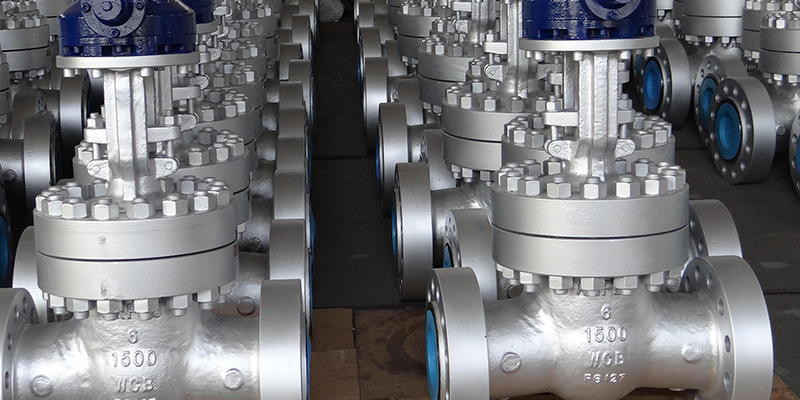
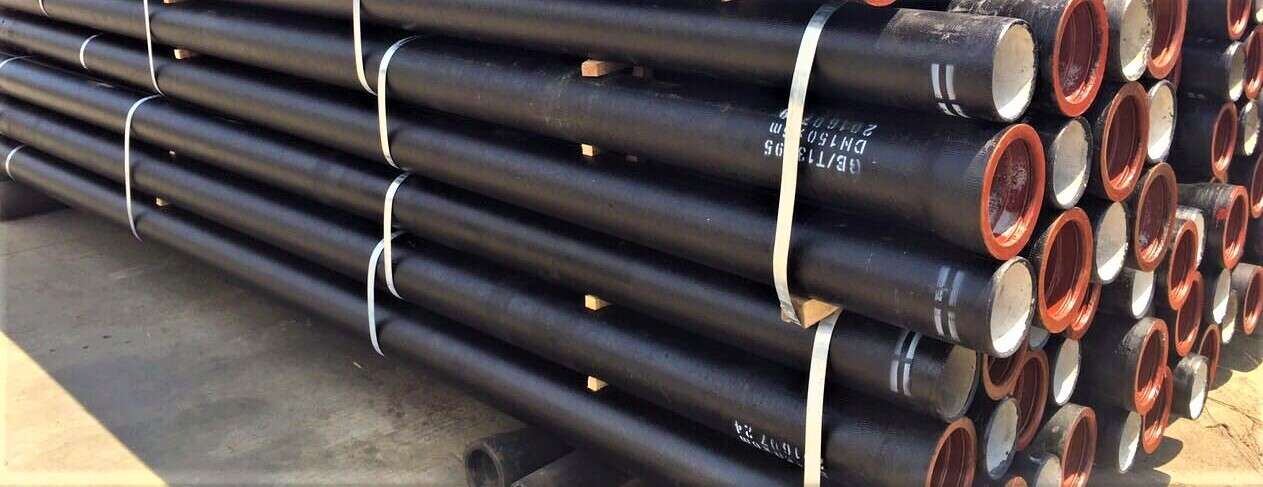


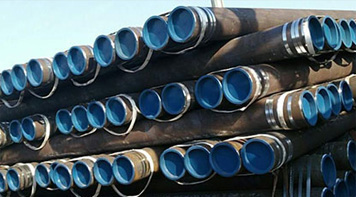 Eastern Steel Manufacturing Co.,Ltd not only improve product production and sales services, but also provide additional value-added services. As long as you need, we can complete your specific needs together.
Eastern Steel Manufacturing Co.,Ltd not only improve product production and sales services, but also provide additional value-added services. As long as you need, we can complete your specific needs together.
